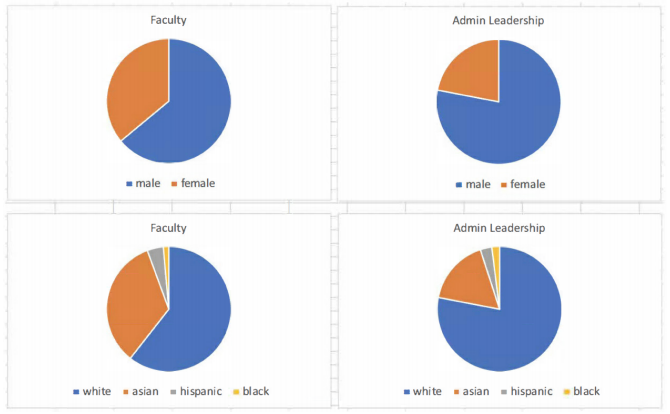Statement on Faculty Diversity, Inclusion and Wellness
Department of Pathology Committee on Faculty Development and Mentorship
University of Pittsburgh School of Medicine
The Department of Pathology at the University of Pittsburgh is committed to providing an environment where our diverse and talented faculty members can achieve their full potential in each of the academic tracks. Faculty development and mentorship encompasses the diverse backgrounds, academic missions and career goals of Pathology faculty at all levels.
As a hybrid department bridging the academic and clinical missions of the University of Pittsburgh School of Medicine and the University of Pittsburgh Medical Center (UPMC), the Pathology Department’s policies reflect the missions of both institutions. Our specific mission is to promote an academically enriching and supportive environment that embraces diversity, inclusion and cultural competence, allowing our faculty, trainees and staff to thrive and succeed as they pursue their individual blend of education, clinical care, research, service and administration.
The Committee for Pathology Faculty Development & Mentorship (PFDM) is tasked with identifying resources and developing programs to enhance career advancement and satisfaction among Pathology faculty. Faculty wellness, productivity and success are integrally related to embracing diversity in all its forms. We celebrate differences of race, gender and identity, ethnicity/national origin, religion, language, military status, disability, age and socio-economic status as they enrich our world view. By valuing excellence through diversity, we aim to empower our faculty and physician leaders to build a diverse and inclusive space, ensuring that we work in a community where all individuals will thrive, advance, and be recognized.
Charleen T. Chu, MD, PhD
Vice-Chair of Pathology Faculty Mentorship
Additional Resources for Faculty Diversity, Inclusion and Wellness
- Confidential Resources for Harassment, Discrimination Concerns
If a work situation makes a person uncomfortable, the University Title IX office can be contacted by either individuals or their supervisors for assistance with options (click the purple title of this section). In addition, individuals can reach out to the following confidential resources for support and assistance. Life Solutions (Faculty & Staff): 1-866-647-3432; lifesolutions.personaladvantage.com. University Counseling Center (Students): 412-648-7930; studentaffairs.pitt.edu/cc
- Mid-Career Minority Faculty Leadership Seminar
This multiday leadership seminar takes a culturally responsive approach to providing a blend of in-person seminars and virtual webinars designed to provide career skills and mentorship for becoming an academic leader.
- Mid-Career Women Faculty Leadership Seminar
This off-site, long weekend seminar includes interactive sessions designed to assist mid-career women faculty with strategic goal setting, mentorship and an introduction to negotiation, wellness and political education necessary to navigate the evolving landscape of academic health center leadership.
- Office of Diversity & Inclusion, School of Medicine
Resources for diversity, equity, and inclusion in the school of medicine
- Office of Diversity & Inclusion, University of Pittsburgh
Resources for the different needs of our diverse community.
- Well-Being - Article on physician burnout and well-being in pathology
By Dr. Iris Schrijver, Stanford University
- Wellness - Executive Leadership & Physician Well-being
Mayo Clinic article highlighting nine organizational strategies to promote physician engagement and well-being
- Wellness - Feeling stressed by child- and elder-care responsibilities?
A grant program for Assistant and Associate Professors, whose primary focus is research (basic and clinical), to assist with personal responsibilities outside of work.
- Wellness and Leadership - Beyond Burnout
Editorial emphasizing the need for culture change in academic medicine
- Wellness and Leadership - It's Not Burnout, It's Moral Injury
Editorial discussing conflicting allegiences imposed on physicians by the current healthcare system
- Wellness and Leadership - RIT Research on Mid-Career Faculty
This 2013 study highlights practices engaged by different universities that target mentorship and the continued career growth of mid-career faculty.
- Wellness and Leadership - Taking the Pulse of Physician Wellness
Article that examining factors that enhance physician fulfillment and those that contribute to burnout.
Department of Pathology Faculty Demographics
The Department of Pathology has approximately 140 faculty, 64% male and 36% female. Racial distribution is 60.6% white; 33.8% Asian; 4.2% Hispanic and 1.4% black. Among administrative leadership roles within the department, 10% are held by Hispanic or black faculty members, 22% by female faculty and 16% by Asian faculty.
